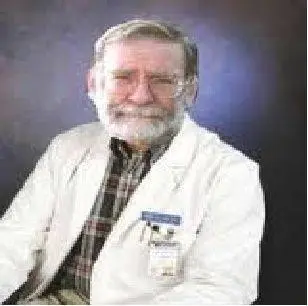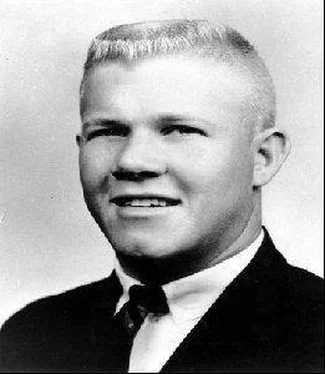Petiot later claimed that throughout the period of German occupation he was engaged in confrontational activities. Allegedly, he developed covert weapons that killed Germans without leaving forensic evidence, planted booby traps all over Paris, had high-level meetings with Allied commanders, and worked with a fictional group of Spanish anti-fascists. However, there was no evidence to sustain any of these tall tales.
In 1980, however, he was cited by former United States Spymaster, Colonel John F. Grombach as a World War II resource. Grombach had been the founder and head of a small sovereign espionage agency, later known as The Pond, which operated from 1942 to 1955. Grombach declared that Petiot had reported the Katyn Forest massacre, German missile development at Peenemünde, and the names of Abwehr agents sent to the U.S. These claims were not maintained by any records of other intelligence services.
Fraudulent Escape, Murder
Petiot's most productive activity during the Occupation was his false escape method. Under the codename of Dr. Eugène, Petiot pretended to have a means of getting people wanted by the Germans, or the Vichy government, to safety outside France. He claimed that he could arrange a passageway to Argentina or elsewhere in South America through Portugal, for a price of 25,000 Francs per person. He had three accomplices to help with his scheme, Raoul Fourrier, Edmond Pintard, and René-Gustave Nézondet. They directed victims to Dr. Eugène, including Jews, Resistance fighters, and common criminals. Once the escapees were in his power, Petiot told them that Argentine officials required all entrants to the country to be vaccinated against diseases, and used this justification to inject them with cyanide. He then took all their valuables and disposed of their bodies.
At first, Petiot dumped the bodies in the Seine, but he later destroyed them by submerging them in quicklime or by incinerating them. In 1941, Petiot bought a house at 21 Rue le Sueur. What Petiot failed to do, however, was keep a low profile. The Gestapo eventually found out about him and, by April 1943, had heard all about this "route" for the escape of wanted people, which they assumed was part of the Resistance. Gestapo agent Robert Jodkum forced prisoner Yvan Dreyfus to approach the supposed network, but Dreyfus simply vanished. A later informer successfully infiltrated the operation, and the Gestapo arrested Fourrier, Pintard, and Nézondet. Under torture, they confessed that "Dr Eugène" was Marcel Petiot. Nezondet was later released but three others spent eight months in prison, suspected of helping Jews to escape. Even under suffering, they did not identify any other members of the Resistance. In reality, they knew of none.
The Gestapo released the three men in January of 1944. Two months later, Petiot's neighbors complained to police of a foul stink in the area, and about large amounts of smoke billowing from a chimney of a house in the neighborhood. Fearing a chimney fire, the police summoned firefighters who entered the house and discovered a roaring fire in a coal stove in the basement. In the fire, and scattered in the basement, were human remains. Petiot, however, was not there.
Over the next seven months, Petiot hid with friends, claiming the Gestapo wanted him for killing Germans and informers. He ultimately moved in with a patient, Georges Redouté, let his beard grow, and adopted various aliases.
During the deliverance of Paris in 1944, Petiot adopted the name "Henri Valeri" and connected with the French Forces of the Interior (FFI) in the uprising. He became a Captain in charge of counter-espionage and prisoner interrogations. When the newspaper, Resistance, published an article about Petiot, his defense attorney from the 1942 narcotics case received a letter in which his renegade client claimed the published allegations were lies. This gave police a hint that Petiot was still in Paris. The search began once more with "Henri Valeri" among those who were drafted to find him. Finally, on October 31, 1944, Petiot was recognized at a Paris Métro station, and arrested. Among his possessions were a pistol, 31,700 Francs, and fifty sets of identity documents.
Sentencing, Execution
Petiot was imprisoned in La Santé Prison. He claimed that he was not guilty and that he had only killed enemies of France. He said that he had discovered the pile of bodies in February of 1944, but had assumed that they were associates killed by members of his Resistance network. The police, however, found that Petiot had no friends in any of the key Resistance groups. Some of the Resistance groups he spoke of had never existed, and there was no verification for any of his claimed exploits. Prosecutors finally charged him with at least twenty-seven murders for profit. Their approximation of his ill-gotten gains was in excess of two hundred million Francs.
On March 19, 1946, Petiot went on trial facing one hundred and thirty-five criminal charges. René Floriot acted for the defense against a panel consisting of state prosecutors and twelve civil lawyers hired by relatives of Petiot's victims. Petiot ridiculed the prosecuting lawyers, claiming that the assorted victims had all been collaborators or double agents, or that the vanished were living in South America under new names. He did finally admit to killing nineteen of the twenty-seven victims found in his house, claiming that they were Germans and collaborators, part of a total of sixty-three – what he called ‘enemy kills.’ His lawyer attempted to depict Petiot as a Resistance champion, but the judges and jurors were unimpressed. Petiot was convicted of twenty-six counts of murder and sentenced to death.
Petiot was beheaded on May 25, 1946, after waiting a few days due to a problem in the release device of the guillotine.
Dr. Harold Frederick Shipman

Born: January 14, 1946
Place: Nottingham, England
Killing Span: 1975–1998
Number of Killings: 218
Captured: September, 1998
Background
Harold Frederick Shipman is a former doctor and a British Serial Killer. He is responsible for the deaths of 218 innocent patients.
Born in Nottingham, England, Shipman was the second of four children born to Harold and Vera Shipman. His working class parents were dedicated Methodists and Harold was very close to his mother who died of cancer when he was just seventeen. In the later stages of her disease, she had morphine administered at home by a doctor on June 21, 1963.
Shipman was a bright student in school and he received a scholarship to attend Leeds School of Medicine, from which he graduated in 1970. After university, he started work at Pontefract General Infirmary in Pontefract, West Riding of Yorkshire, and in 1974, took his first position as a General Practitioner at the Abraham Ormerod Medical Centre in Todmorden, West Yorkshire. In 1975, he was caught forging prescriptions of Pethidine for his own personal use. He was fined £600, and temporarily attended a drug rehabilitation clinic in York. After a short stint as Medical Officer for Hatfield College, Durham, while doing temporary work for the National Coal Board, he became a General Practitioner at the Donneybrook Medical Centre in Hyde, Greater Manchester, in 1977. Shipman continued working as a GP in Hyde throughout the 1980s and founded his own surgery practice on Market Street in 1993, becoming a beloved member of the community.
Investigation
In March, 1998, Dr. Linda Reynolds of Brooke Surgery, in Hyde, encouraged by Deborah Massey from Frank Massey and Son's Funeral Parlor, expressed concerns to John Pollard, the Coroner for the South Manchester District, about the high death rate among Shipman's patients. In particular, she was troubled by the huge number of cremation forms for elderly women that he needed countersigned. The issue was brought to the attention of the police. The police, however, proved incapable of finding sufficient evidence to bring charges. The Shipman Inquiry afterward would blame the police for assigning inexperienced officers to the case. However, between April 17, 1998, when the police discarded the investigation, and Shipman's ultimate arrest, he killed an additional three more people. His last victim was Kathleen Grundy, a former Mayor of Hyde, who was found dead at her home on June 24, 1998. Shipman was the last person to see her alive, and later signed her death certificate, recording ‘old age’ as cause of death.
Читать дальше













